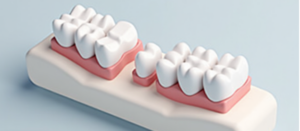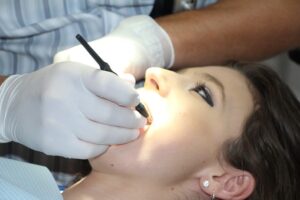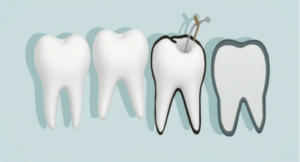When you need to fix a tooth, dental bonding for repairs can be a great choice. It is a quick and easy way to repair damaged teeth and improve your smile. This treatment uses a special material that matches the color of your teeth. It helps to fill in cracks, chips, or gaps. In this guide, you will learn about dental bonding, how it works, and why it might be right for you.
Key Takeaways
- Dental bonding is a helpful way to repair damaged teeth.
- It uses tooth-colored material that blends well with your natural teeth.
- The procedure is quick and usually does not need much preparation.
- Dental bonding can last several years with good care.
- It is a cost-effective option compared to other dental treatments.
For more information about the various cosmetic dentistry options available, check out our page on cosmetic dental procedures.
What Is Dental Bonding for Repairs?

Dental bonding is a process where a dentist applies a tooth-colored material to a damaged tooth. This material is called composite resin. It is sticky, so it bonds well to your tooth. The dentist shapes and polishes it to match the rest of your teeth. This makes the repair look natural.
| Type of Dental Bonding | Description | Typical Cost | Lifespan |
|---|---|---|---|
| Standard Bonding | For minor repairs like chips and cracks. | $100 – $400 per tooth | 3-10 years |
| Cosmetic Bonding | Used for more aesthetic improvements. | $300 – $800 per tooth | 5-10 years |
| Large Area Bonding | For larger repairs, may include additional treatments. | $500 – $1200 per tooth | 3-7 years |
Why Choose Dental Bonding for Repairs?
There are many reasons to choose Dental Bonding for Repairs:
- Quick Solution: The treatment usually takes less than an hour.
- Cost-Effective: It is often less expensive than options like crowns or veneers.
- Painless: Many people find the procedure comfortable.
- Minimal Preparation: Most of the time, your dentist does not need to remove much of your tooth structure.
When Is Dental Bonding for Repairs Recommended?
Dental bonding can be used in several situations:
- Chips or Cracks: If your tooth has a small chip or crack, bonding can fix it.
- Gaps Between Teeth: Bonding can fill small gaps to create a smoother smile.
- Discoloration: If a tooth is stained, bonding can cover the discoloration.
- Tooth Decay: Your dentist can use bonding to fill small cavities.
Additional Uses for Dental Bonding for Repairs
- Repairing misshapen teeth
- Protecting exposed roots due to gum recession
- Enhancing the appearance of teeth before orthodontic treatment
How Does Dental Bonding for Repairs Work?

The process of dental bonding is simple. Here is what usually happens:
Initial Consultation
Your dentist will look at your teeth and ask about your concerns. They will decide if dental bonding is a good choice for you.
Preparing the Tooth
Your dentist will clean the tooth that needs repair. They may use a special solution to make the surface rough. This helps the bonding material stick better.
Applying the Bonding Material
Next, your dentist will place the composite resin material on the tooth. They will shape it to match the surrounding teeth. After shaping, they will use a special light to harden the material.
Final Touches
Once the bonding is hard, the dentist will polish it to make it shine. They will check your bite and make any adjustments if needed. After this, your new smile is ready!
Benefits of Dental Bonding for Repairs
Dental bonding has many advantages. Here are a few:
Quick and Easy
Most dental bonding procedures take less than an hour. You can often get it done in one visit.
Natural Look
The composite resin can be matched to the color of your teeth. This makes it hard to spot the repair.
Strong and Durable
When done correctly, dental bonding can last for several years. With good care, you can enjoy your new smile for a long time.
Affordable Option
Dental bonding is usually less expensive than other treatments, like crowns or veneers. It can be a great choice if you are on a budget.
Risks and Considerations
While dental bonding is safe, there are a few things to keep in mind:
Staining
Composite resin can stain over time, especially if you drink coffee or tea. You may need to touch up the bonding after a few years.
Chipping
Though durable, bonding can chip if you bite hard objects like ice or pens. Be careful with what you chew.
Not for Large Repairs
If a tooth has a large cavity or needs a lot of work, bonding may not be the best option. Your dentist might recommend a crown instead.
How Long Does Dental Bonding for Repairs Last?

Dental bonding for repairs Dental bonding can last anywhere from 3 to 10 years, depending on how well you take care of your teeth. Good oral hygiene, regular dental visits, and avoiding hard foods can help your bonding last longer.
How to Care for Bonded Teeth
Taking care of your bonded teeth is simple. Here are some tips:
- Brush and Floss: Keep up with your daily brushing and flossing. This helps prevent decay around the bonded area.
- Avoid Staining Foods: Limit drinks like coffee, tea, and red wine. These can stain the bonding material.
- Don’t Chew Hard Objects: Avoid biting on hard candies, ice, or pens. This can break the bond.
- Visit Your Dentist Regularly: Regular checkups can help catch any issues early.
Common Questions About Dental Bonding for Repairs
Is dental bonding painful?
Most people find dental bonding to be a comfortable process. It usually does not require anesthesia, but your dentist can numb the area if needed.
How does dental bonding for repairs compare to other treatments?
Bonding is often quicker and less expensive than crowns or veneers. However, it may not last as long as these options.
Can dental bonding be removed?
Yes, if you decide you no longer want the bonding, a dentist can remove it. They will use special tools to take off the resin without harming your tooth.
Is bonding right for everyone?
Not everyone is a good candidate for dental bonding. Your dentist will evaluate your teeth and discuss the best options for your situation.
Conclusion
Dental bonding is a helpful option for repairing damaged teeth. It is quick, affordable, and can give you a beautiful smile. If you have chips, cracks, or gaps, talk to your dentist about dental bonding. It might be just the solution you need.
Whether you are looking for a simple repair or a way to enhance your smile, dental bonding is worth considering. Your dentist can help you decide if this treatment is right for you.
Taking care of your teeth is important. With the right care, dental bonding can be a fantastic way to keep your smile bright and healthy. Don’t hesitate to reach out to your dentist for more information or to schedule a consultation. Your smile deserves the best!
To learn more about maintaining healthy teeth, visit our page on dental hygiene tips.
| Care Tips for Bonded Teeth | Frequency | Purpose |
|---|---|---|
| Brush | Twice daily | Remove plaque and prevent decay |
| Floss | Daily | Keep gum line clean |
| Dental visits | Every 6 months | Monitor oral health and bonding condition |
